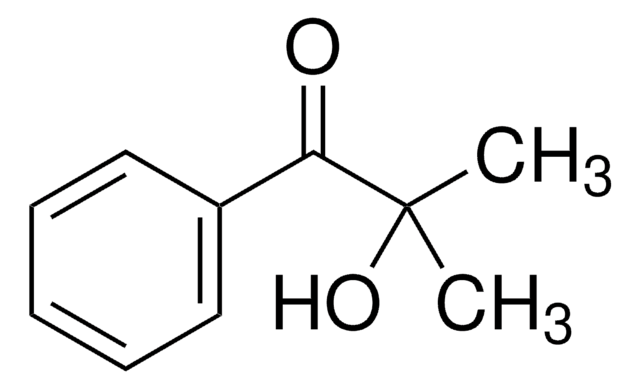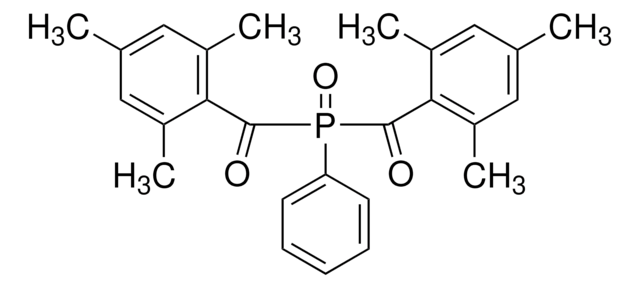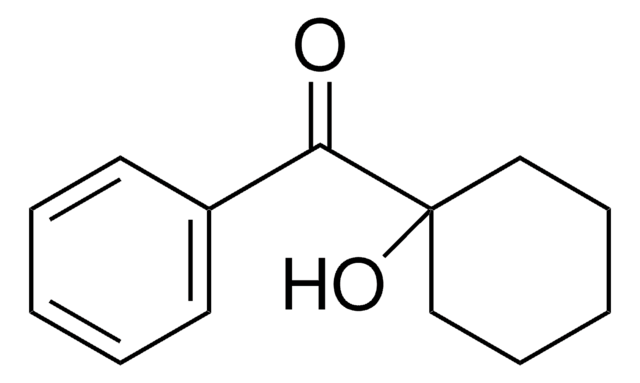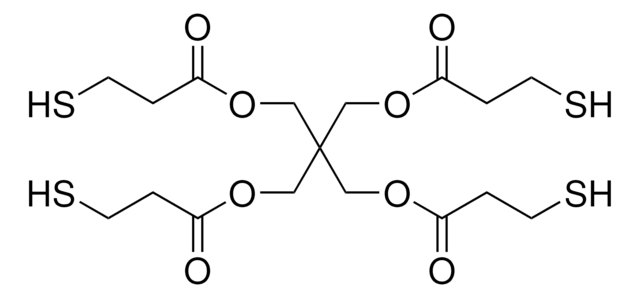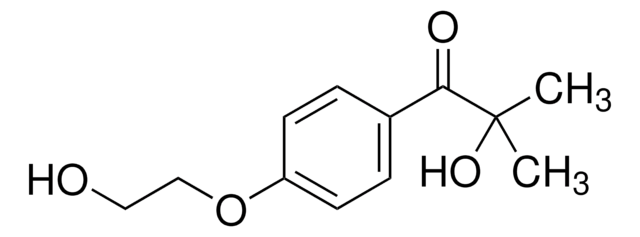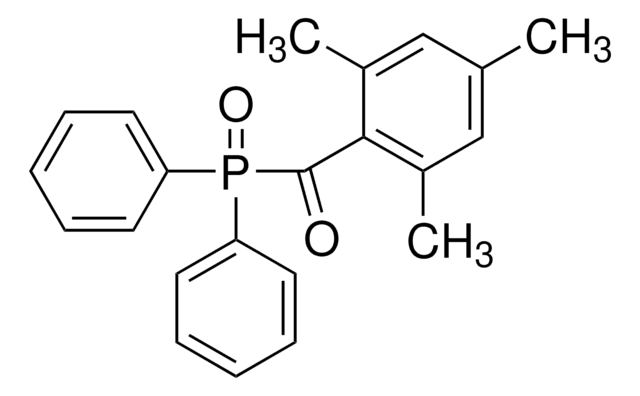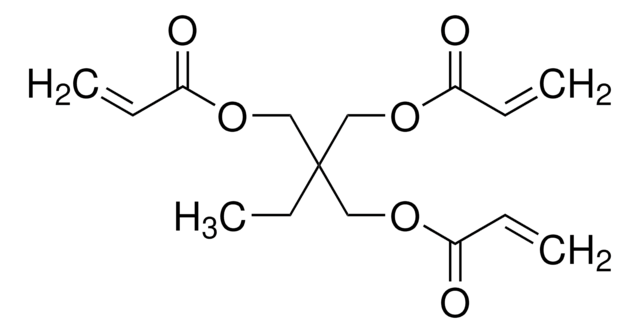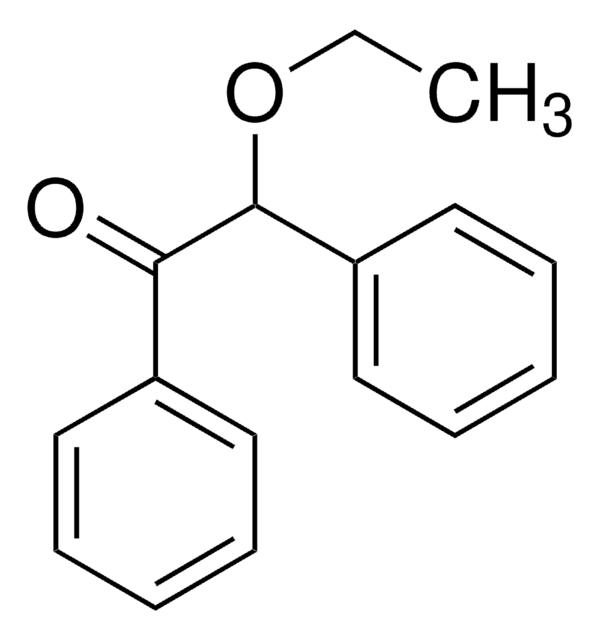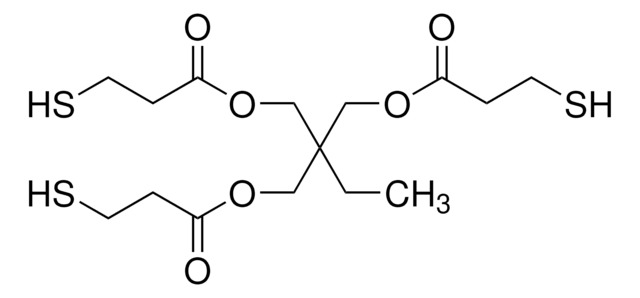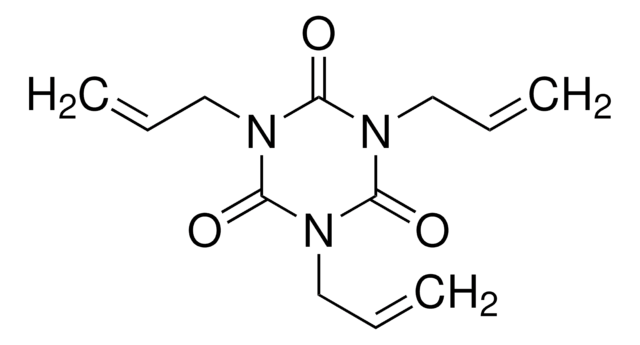196118
2,2-Dimethoxy-2-phenylacetophenone
99%
Synonyme(s) :
α,α-Dimethoxy-α-phenylacetophenone, Benzil α,α-dimethyl acetal
About This Item
Produits recommandés
Pureté
99%
Pf
67-70 °C (lit.)
Chaîne SMILES
COC(OC)(C(=O)c1ccccc1)c2ccccc2
InChI
1S/C16H16O3/c1-18-16(19-2,14-11-7-4-8-12-14)15(17)13-9-5-3-6-10-13/h3-12H,1-2H3
Clé InChI
KWVGIHKZDCUPEU-UHFFFAOYSA-N
Informations sur le gène
human ... ACHE(43) , BCHE(590) , CES1(1066)
Vous recherchez des produits similaires ? Visite Guide de comparaison des produits
Catégories apparentées
Application
- For the photopolymerization of methacrylate monomers in thick sections(~2mm).
- In the preparation of UV-curing silicone rubber with excellent mechanical properties and thermal stability via thiol-ene reaction.
Mention d'avertissement
Warning
Mentions de danger
Conseils de prudence
Classification des risques
Acute Tox. 4 Oral - Aquatic Chronic 3 - STOT RE 2
Organes cibles
oral cavity
Code de la classe de stockage
11 - Combustible Solids
Classe de danger pour l'eau (WGK)
WGK 2
Point d'éclair (°F)
Not applicable
Point d'éclair (°C)
Not applicable
Équipement de protection individuelle
dust mask type N95 (US), Eyeshields, Faceshields, Gloves
Faites votre choix parmi les versions les plus récentes :
Déjà en possession de ce produit ?
Retrouvez la documentation relative aux produits que vous avez récemment achetés dans la Bibliothèque de documents.
Les clients ont également consulté
Articles
The Progress in Development of Dental Restorative Materials
Notre équipe de scientifiques dispose d'une expérience dans tous les secteurs de la recherche, notamment en sciences de la vie, science des matériaux, synthèse chimique, chromatographie, analyse et dans de nombreux autres domaines..
Contacter notre Service technique